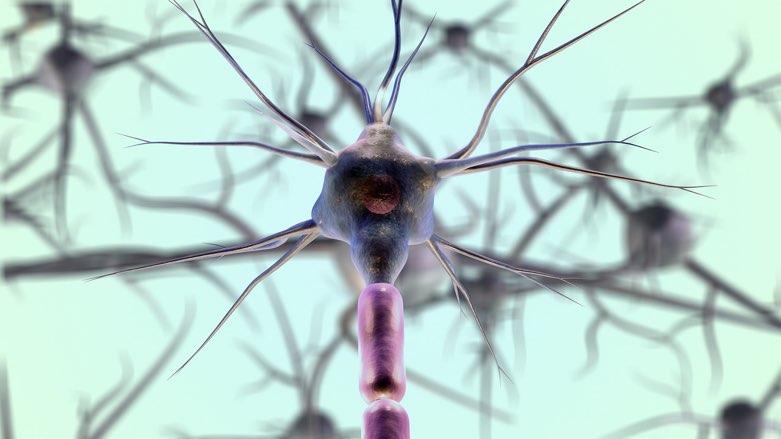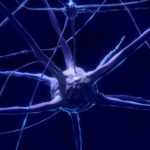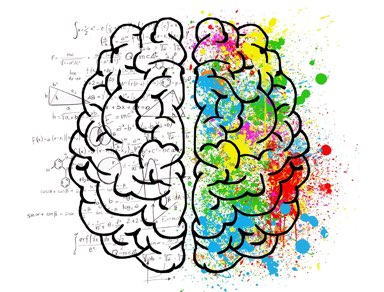Everyone will agree that human brain is the most sophisticated organ ever. Hence, it is not a surprise that, brain growth stages are so complicated. In this blog we will simplify all of it, step by step starting from process of ‘Neurulation’ till stage of ‘Myelination’. So that a layman can get a clear picture of brain growth stages comfortably.
What is brain made up of ?
You can say, human brain is the most integral internal organ of body. It is a soft structure, positioned inside skull bone of head.
This is made up of millions of brain cells, which are also called neurons. These neurons inter-connect with each other through processes. By virtue of these neural processes they send signal among themselves.
Delivering signal is nothing but a way to communicate. This communication among brain cells, is crucial for proper functioning of brain.

Basic structure of brain
Outer part of brain is called cortex or gray mater. This is composed of neurons or brain cells. Hence it is greyish in shade. Inner portion of brain is labelled as white mater, owing to its relatively white colour. White mater carry nerve fibres.
What does brain do ?
Brain governs literally each and everything about a human. Have you seen an orchestra conductor? He is the person who stands in front, moves his hand in a specific pattern and controls music of an orchestra. Brain runs the show pretty much like an orchestra conductor while other body systems act as instrument players.
Brain directs muscle movement, sensations, speech, hearing, vision etc. Not only that but also it rules a person’s social behaviour, emotions, thoughts, logical reasoning, learning too. It is because of complexity of human brain that, a person is able to have own imagination and creativity.
BRAIN GROWTH STAGES
Introduction
Brain takes its origin from a structure called neural plate. This process starts at approximately around 2 weeks of pregnancy. It is fascinating, how from a just a few milimeter neural plate, such an intricate organ like brain develops.
Thereby growth and development of brain kicks in when baby is inside mother’s womb, at just 2 weeks of pregnancy. And this continues till young adulthood. Rate of brain growth varies across different age groups.
Maximum growth and development takes effect when baby is inside uterus and also during initial few years of life. That is why it is crucial for parents to pay attention to a kid in initial times, especially during first 5 years of life.
As time passes, brain cells increase in numbers and mass. This is known as “growth”. Along with, also neurons ( brain cells ) keep on forming new connections, so that brain matures functionally. This process is called “development”. Brain growth and development are highest for a baby , inside uterus and also right through the first 5 years of life.
List of 7 Brain growth stages step by step
.
Below are 7 critical brain growth stages listed chronologically.
- Neurulation
- Proliferation
- Cell migration
- Differentiation
- Synaptogenesis
- Synapse pruning
- Myelination
1.Neurulation -
Brain growth stages begin with neural plate formation. Neural plate is the structure that shapes at around 2 weeks pregnancy. This is a plate like structure which then folds onto itself forming a tube. This is called neural tube.
Neural tube comes into being at around 3-4 weeks ( approximately 1 month ) of pregnancy. It comprises of 3 parts.
- Forebrain: The foremost part is called forebrain.
- Midbrain: The middle segment is described as midbrain.
- Hindbrain: Rearmost part is known as hindbrain.
These later grow into distinct areas of brain.
Every mother needs folic acid supplementation for neural tube to develop properly. Hence CDC recommends all women of reproductive age group to take 400 mcg of folic acid everyday. In view of any medical condition or special situation your gynaecologist may prescribe alternative dose of folic acid as well.
2.Proliferation-
Proliferation is a process through which brain cells multiply in number. There occurs a point where brain cells are more than required in number. That is when extra neurons die out by a process of programmed cell death, also known as “apoptosis”.
This neuron cell death is purely a genetically controlled event. That means it is totally decided by genes of an individual that which cells will live on and which cells are going to perish.
3.Cell migration-
After proliferation and apoptosis, each remaining cell moves to its pre-destined location. This process is called cell migration.
Majority of neurons migrate outwardly. This happens in such a way that, the ones which complete migration early, settle at innermost place, and neurons that migrate last lodge at the outermost place. Hence this neuron migration is a type of “Radial migration”.
Cortex or gray mater of brain attains its 6 layered structure as cell migration completes.
4.Differentiation-
After nerve cells relocate to their respective positions, they meet either of 2 fates as outlined below.
- 40-60% of cells die on their own by programmed cell death or apoptosis
- Rest 40-60% cells evolve to develop nerve processes around them
These nerve processes are of 2 types. Smaller ones which branch out like tree are called dendrites. They receive signal input to cell body. The longer and thinner one is called axon or nerve fibre. Axon transfers out signal to another cell.

5.Synaptogenesis -
Basically axon of one neuron connect with dendrite of another neuron. This junctional point is called as synapse. The process of formation of synapse is called synaptogenesis.
It is through this synapse between dendrites and axon, that neurons communicate with each other. They send and receive signal along neural synapse.
During initial stages of life, massive synaptogenesis prevails. It is so much more that, when a kid is around 2 years old, it has approximately double the number of synapse than that of adult.
Brain growth stages, till the phase of synaptogenesis are wholly driven by genetics. That means gene of a person determines all events from neurulation, proliferation to apoptosis and synaptogenesis. What happens next is pretty much interesting.
6.Synapse pruning -
Synaptogenesis is unrealistically high in young kids, so that numerous extra synapses are formed. Synapses which are used frequently stays and those which are not used die out. This process of synapse reduction is called as “synapse pruning”. It is noteworthy that synapse pruning or reduction is solely dependent on environmental factors.

Proliferation and apoptosis of nerve cells are controlled entirely by genes of an individual. Whereas synapse reduction or pruning is dependent on environmental experiences.
Different areas of brain has unique synapse pruning timeline. For instance in hearing and vision areas, pruning is complete by 6 years of life. But in areas of emotions, pruning sustains till adolescence.
Different areas of brain has unique synapse pruning timeline. For instance in hearing and vision areas, pruning is complete by 6 years of life. But in areas of emotions, pruning sustains till adolescence.
Brain plasticity
The word “plasticity” means something that can be given any shape. This applies to functions of brain as well. Human brain mechanics are not hard-wired. It can be re-wired to do actions outside of its usual. Brain can be trained and tricked to adapt new environment.
One such example of brain plasticity is of someone who encounters brain stroke, that damages an area of brain. Stroke leads to paralysis.
Despite that, few months later that part of body recovers from paralysis partially or completely .
That happens because another healthy area of brain takes over that function, apart from its own regular function.
There is a direct correlation between peak synapse production and plasticity of brain. Peak synapse production incurs during initial years. Consequently, neuro – plasticity is maximum during early childhood.
Hence parents must know essence of growing brain in first five years of life. They should provide kid with positive environment when its brain is still developing.

Recent research shows that adult brain also have some level of neuroplasticity as its fundamental nature.
7.Myelination -
This is a process in which axons of neurons ( nerve fibres ) are surrounded by fat. This ensures faster signal conduction.
For basic functions like muscle activity or sensations, myelination is complete by 5 years. But for higher functions sometimes it proceeds till adolescence or adulthood also.
Conclusion
A kid’s brain is still a developing brain. So early years of life is where a foundation of future brain development is laid.
Hence parents should provide a kid with necessary love and affection. Because creating an environment full of positive emotional experiences for a kid goes a long way.
If you have anything else to add on to brain growth stages, then comment below.
Caution
All the informations provided here are for educational and awareness purpose only. Kindly do not use these as alternative to medical consultation.





Beautiful explanation
Thanks a ton!